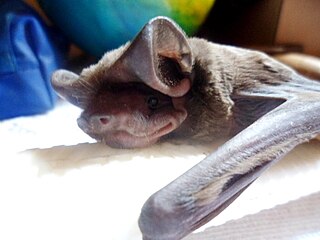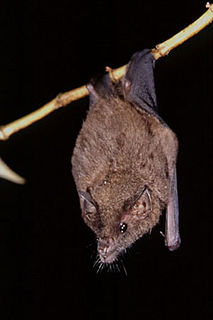
Wagner's bonneted bat or Wagner's mastiff bat, is a species of bat in the family Molossidae. It is found in the Americas from Argentina and Peru north to Mexico, and Cuba. Populations in Florida in the United States are now recognized as the Florida bonneted bat

Commissaris's long-tongued bat is a bat species from South and Central America.

Miller's long-tongued bat is a bat species found in northern Brazil, Venezuela, Colombia, Guyana, Trinidad and Tobago, Grenada, the Netherlands Antilles and the U.S. Virgin Islands.

Dekeyser's nectar bat is a bat species found in Brazil and Bolivia.

Findley's myotis is a species of vesper bat. It is found only on the Tres Marías Islands off the west coast of Mexico.

Glossophaga is a genus of bats in the leaf-nosed bat family, Phyllostomidae. Members of the genus are native to the American Neotropics.

The large-tailed antshrike is a species of bird in the family Thamnophilidae. It is found in the southern Atlantic Forest.

The western long-tongued bat is a species of bat in the family Phyllostomidae. It is endemic to southern Mexico, from Chiapas in the southeast to Tlaxcala in the northeast and Michoacán in the west. It ranges over tropical dry forest, shrubland, and dry pine–oak forests, typically from sea level to 300 meters elevation and occasionally up to 1500 meters elevation. It inhabits caves, tree hollows, culverts, wells, and buildings.

The southern long-nosed bat is a South American species of bat in the family Phyllostomidae.

Glossophaginae is a subfamily of leaf-nosed bats.
Anoura peruana is a species of bat from Colombia and Peru. It was elevated to a species in 2010, after previously being considered a subspecies of Geoffroy's tailless bat. The females are larger than the males.











